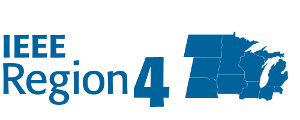Kick Off 2026 IAS members, others like PES, PELS and YP section members are also invited to the Meeting/Mixer, Tuesday January 13, 2026. Sing up in advance of the event. Kevin needs to fill out a spreadsheet with attendees names for security 24hrs before event be signed up by 5pm on Sunday 1-11-2026. On 1-13-2026 Enter the doors on the east and west sides of the building. Meet up with Kevin for access to the elevators. Kevin Thernes, PE D 402.399.1161 M 402.968.3864 All attending will be expected to participate and discuss: 1) INTRODUCTIONS The chair or Vice-Chair will do a roll call out of member names, and please respond with a Self-introduction with special interests, employer, preferred email for IEEE contacts 2026 goals will be discussed A) Enhance the IAS membership numbers. B) To be a viable IAS society IEEE requires we hold two events per year. As we meet or correspond by email, we need to bring suggested subjects/topics/tours to each meeting by each member. C) To be a viable IAS society we need Volunteers/Mentors for officer positions Chair, Vice-Chair, several members at large in IAS, Secretary, Student branches mentors (one for each campus might be ideal) D) Joint meetings with other chapters and groups E) Additionally, to the members listed above, the IAS society needs at least one volunteer to for Obtaining swag for membership development from Region 4. F) Open business for new thoughts G) Officer training Co-sponsored by: Nick McIntosh Agenda: Registration Sign up deadline on January 11th 5pm Mixer Event on January 13th - Sign in and Networking at 5:30, God Fathers Pizzas at 6 pm and Gates to the elevators and access upper level close at 6:30, don't be late. Pizza(s) - cheese, pepperoni, meat lover, vegetarian, soda pop. 6 :15 till 7:15 Mixer- Meeting Clean up concludes by 730pm. All attending will be expected to participate and discuss: 1) INTRODUCTIONS The chair or Vice-Chair will do a roll call out of member names, and please respond with a Self-introduction with special interests, employer, preferred email for IEEE contacts 2026 goals A) Enhance the IAS membership numbers. How to get to 30 IAS members? Ask one co-worker a month to join? Point out to the PES that IAS is a sister society and supplements PES so belonging to both is a great idea for the knowledge gained. Point out membership benefits – Networking with colleagues and experts Gaining Leadership Skills and Emotional EQ, Discounts on standards, insurances and laptops, B) To be a viable IAS society IEEE requires we hold two events per year. As we meet or correspond by email, we need to bring suggested subjects/topics/tours to each meeting by each member. We will team up with PES/ PELS/ YP/ as we help those societies grow and flourish. When asked, on some occasions we will team up with the Communications and Computer societies too. -1) Which months do we plan on having the meetings for the two events? Eweek in February? EWeek (February 22-28, 2026, March?, September? Eweek in late April/May for student senior project awards and Sections awards banquet. IEEE day 1st Tuesday of October? 10-06-2026 -2) Which day of the month for the event? Second Thursday or other day like 3rd or 4th Tuesday -3) Which time of day for events, Lunch / dinner/ or other -4) Which is referred In person or virtual meetings? C) To be a viable IAS society we need Volunteers/Mentors for officer positions Chair, Vice-Chair, member at large in IAS, Secretary, Student branches mentor D) Open business for new thoughts 1) PACE activities – soft skills 2) Technical activities – subject driven 3)Social Activities – mixer with students UNL UNO Bellevue, 4)Chess Tournament 5) Senior Project judging volunteers in April/May 6) School of Durham AE at PKI mentoring and project evaluations volunteers E)Clean up. Room: TBD, Bldg: HDR, 1917 South 67th Street, Omaha, Nebraska, United States, 68106-2973

